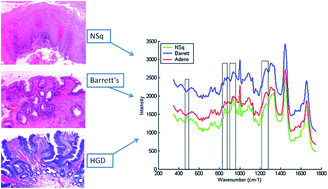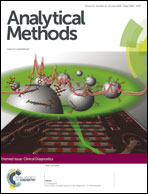Vibrational spectroscopy for cancer diagnostics
Abstract
The vibrational spectroscopy techniques of Raman spectroscopy and Fourier-transform infrared spectroscopy offer a number of potential advantages as tools for clinical diagnosis. The ability of these methods to detect subtle biochemical changes relating to pathology opens the possibility of their use in tissue diagnosis. Potential applications include use as an ‘optical biopsy’ technique for in vivo tissue diagnosis or to guide therapy, as a ‘digital staining’ method to assist a histopathologist in analysing a sample, or as an entirely automated process for histopathology classification. To date, much work has been undertaken in applying these spectroscopic methods to discriminate between disease states across a wide range of pathologies and organ systems, but as yet none have entered routine clinical practice. There is a pressing clinical need for real-time, accurate tissue diagnosis, especially in malignant conditions for which rapid diagnosis and comprehensive identification and treatment of diseased tissue are of paramount importance. Cancer diagnostics remains reliant on analysis of tissue samples by histopathologists to confirm malignancy, based on morphological tissue changes and immunohistochemical staining techniques. There is increasing evidence that vibrational spectroscopy, in combination with chemometric data analysis, is a powerful and accurate technique for detecting cancerous and pre-cancerous biochemical changes both in vitro and in vivo, for a range of malignant conditions. This review examines the progress of vibrational spectroscopy towards selected clinical applications, with a particular focus on cancer diagnostics.

- This article is part of the themed collection: Clinical Diagnostics

 Please wait while we load your content...
Please wait while we load your content...